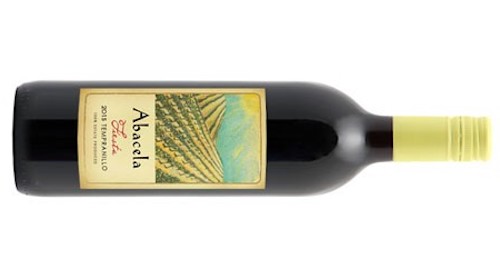52 Wines in 52 Weeks: The Grill-Friendly Tempranillo
Photo via MaxPixelIf you are a red wine person who enjoys applying food to grills over smoldering charcoal and you aren’t a Zinfandel person, a phrase you might want to memorize is “Crianza Rioja.” Tempranillo is a dark-skinned grape that’s often blended with at least a splash of another varietal (Merlot, Garnacha and Cabernet are common examples) to pump up its naturally laid-back aromatic profile, though it can and does make plenty of great varietal wines. Like Pinot Noir, to which is was once thought to be related, it’s a bit of a fussbudget to grow, and prefers chalky soils and a serious day-to-night temperature differential, so its sweet spots tend to be mountainous. Most Tempranillo you’ll stumble into at the store will be from Spain, though it is also grown in Portugal (where it’s one of the grapes used for making port), Australia, and, of course, the “you name it, we’re growing it somewhere” land of the Pacific Northwest. (It’s a relative rarity in California, where, like increasing numbers of human residents, it has trouble making ends meet.)
Tempranillo is capable of being a bit flat (and if you do come across one that is, bear in mind that your disappointing dinner wine will make an excellent sangria, or cocktail mixer), but when it’s happy, it’s a wonderful summer wine with a bright ruby-red color, subdued but pleasant aromatics, and frankly yummy palate-palettes: Frequently berries and baking spice, often plums, sometimes herbs, tobacco, vanilla (especially if it’s in a long-term relationship with oak) and leather. It’s lighter in the mouth than Cabernet (which can also express many of those notes) and a generally easy and low-key summer party wine. You can chill it a bit without bumming it out, and its dirty secret is that it pairs really well with hot dogs. Because of its low acidity it’s also a tomato-safe red, so bust it out alongside your famous lasagna or a caprese salad. It likes corn for whatever reason so keep it in mind if your jam is grits, polenta, or things on tortillas.
Eight Bottles You Need to Try

Abacela Tempranillo Fiesta (Umpqua Valley, OR $23)
These guys are Tempranillo pioneers in Oregon and have a couple of different bottlings; this is the less-costly one and a winner of many awards. Velvety more than leathery, the 2015 vintage is a lush, fruity wine with a plummy nose and palate notes of cherry, spices and vanilla (I taste a bit of a coffee note; my co-taster didn’t). The winemaker recommends Spanish tapas with this and I do not disagree.
Beronia Rioja Grean Reserva (Rioja, Spain)
Deep red color and a pretty intense nose for a Tempranillo-they can be a little subdued. This one’s got a blackberry component with an array of baking spice and incense notes and, again, a decent ration of vanilla. Chocolate and tobacco on the finish.
Hacienda de Arínzano Red 2012 (Spain $20)
This one’s a blend (80% Tempranillo, 10% Merlot, 10% Cabernet Sauvignon), which gives it a little added vibrancy and depth. Garnet color, primary notes are black fruits, cinnamon, nutmeg, coffee or mocha, and a bit of licorice. Long finish. Not a wallflower.
Flying Dreams Tempranillo 2012 (Columbia Valley, $49)
